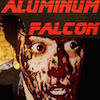| Welcome, Guest |
You have to register before you can post on our site.
|
| Latest Threads |
TROY (2004) - Replace Sco...
Forum: Requests, proposals, help
Last Post: ECChihuahua
2 hours ago
» Replies: 34
» Views: 17,194
|
The Terminator (1984) DEF...
Forum: Released
Last Post: Trickster
6 hours ago
» Replies: 21
» Views: 8,834
|
Drunken Master II (醉拳二)–F...
Forum: Released
Last Post: Segmarian
Yesterday, 11:27 AM
» Replies: 18
» Views: 11,635
|
Movie watcher has arrived...
Forum: Presentation
Last Post: Segmarian
Yesterday, 11:18 AM
» Replies: 0
» Views: 38
|
From Film to Delivery.
Forum: General technical discussions
Last Post: CSchmidlapp
Yesterday, 10:04 AM
» Replies: 64
» Views: 83,694
|
The Matrix (1999) Cinema ...
Forum: Requests, proposals, help
Last Post: Stamper
Yesterday, 10:02 AM
» Replies: 2
» Views: 1,045
|
Dr. No, FRWL, Goldfinger ...
Forum: Released
Last Post: Stamper
2025-12-30, 12:46 PM
» Replies: 4
» Views: 1,390
|
Terminator 2 CDS mix
Forum: Released
Last Post: kenkenken96
2025-12-30, 09:19 AM
» Replies: 299
» Views: 326,571
|
Introduction of a new ent...
Forum: Presentation
Last Post: vivekreddym67
2025-12-30, 07:57 AM
» Replies: 0
» Views: 57
|
Question about True Lies/...
Forum: Movies, TV shows and other
Last Post: SwatDB
2025-12-30, 02:32 AM
» Replies: 9
» Views: 395
|
|
|
| Platoon (1986) - THX LD PCM |
|
Posted by: bendermac - 2016-10-07, 08:00 PM - Forum: Requests, proposals, help
- Replies (1)
|
 |
On a German Blu-ray forum they discuss about a possible new release
of the movie here in Germany. Since I'm quite happy with the 25th Anny.
release from MGM in terms of video, I'd love to add the audio from
the THX LD to it.
Anyone can jump in with a bit-perfect capture?
|

|
|
| Movie Studio Logos for Preservation and Project usage |
|
Posted by: bendermac - 2016-10-05, 12:13 PM - Forum: Requests, proposals, help
- Replies (14)
|
 |
Guys/Girls, what about a new project in which we gather the movie logos in the highest
possible quality, so they can be used on various projects? I bet this would help many
creators saving time to hunt down certain logos for their projects.
- How do we present them?
We give as much information as possible, like year, length, quality, resolution,
a/v codec usage, possibly the source and a screenshot.
- Can logos be shared when they are re-created?
Of course, if the quality matches the original presentation. Project files can be shared,
but they must include all assets, incl. fonts, etc.
What codec need the logo to be shared in?
The goal for re-created logos must be 1080p and in various aspect ratios, with lossless a/v output.
I suggest animation codec. While it's old, it's still perfect to guarantee no issues to work on Mac or Windows.
If you choose to supply ProRes, only use official codecs from Apple.
The FFMPEG created ProRes files in my experience tend to be problematic at times. So better stay away from them.
If sourced from VHS/LD/DVD/Blu-ray/Film Scans they also need to be in lossless a/v.
And here is my first contribution to this thread :victory:
Warner Bros. Logo (1972-1984)
Source: Blu-ray (I think it was from Argo)
Length: 7 seconds
Codec: Apple ProRes 422 HQ - NO audio
Resolution: 1920x816
Framerate: 23,976fps
Download: MEGA (26MB)
![[Image: wqwIXWJm.jpg]](https://i.imgur.com/wqwIXWJm.jpg)
|

|
|
| Joe Versus The Volcano - need help with LD audio sync and original logos |
|
Posted by: applesandrice - 2016-10-04, 11:10 PM - Forum: Requests, proposals, help
- Replies (12)
|
 |
For years, I've been hoping to get my all-time favorite film, "Joe Versus the Volcano" on Blu-ray. 10 years into the format, however, that doesn't seem very likely to happen. With that in mind, and inspired by the many fantastic projects both here and at OriginalTrilogy, I thought I might try and create my own.
Some years ago, I obtained a 720p copy of the film from an HD broadcast. Hoping to pair this with a lossless (original stereo) soundtrack, I ripped my laserdisc, and then set about trying to sync that with the HD video. Lacking knowledge, experience, and time, however, I eventually gave up. I was also dissatisfied with having only highly-compressed 720p video. Never one to throw anything out, the project has been on my harddrive ever since, calling to me every now and then to give it another shot. Furthermore, after years of searching, last week I discovered a relatively good quality 1080p rip of the film!
That being said, at this moment, my plan is to construct a Blu-ray of "Joe Versus The Volcano", with the original lossless stereo track (as well as the DVD's DD 5.1 track), and an assortment of special features. Once completed, I'd like to share it with the Spleen community, and anyone else who's interested.
As a rank amateur, I would GREATLY appreciate any help that could be provided with the syncing process! If someone experienced would be willing to take over, I'd be thrilled to pieces, but I'd be glad for any help at all. I'm also hoping to obtain the original 1990-era WB logos (opening and closing) for the film. Does anyone here have access to these, or know of an existing Blu-ray source?
Thanks, and best wishes!
|

|
|
| Universal Monsters: Undo BD 'fixes' |
|
Posted by: crissrudd4554 - 2016-10-04, 04:58 AM - Forum: Requests, proposals, help
- Replies (95)
|
 |
Hello this is a project I've considered proposing for a little while now. Back in 2012, 9 of Universal's classic Monster films were released on BD for the first time. For the most part they were positively received by the fans. However two things have caught my attention with two key films of those 9 restored films: Frankenstein and Bride of Frankenstein. The issue with Bride has been discussed sporadically among some fans since the BD's release (http://monsterkidclassichorrorforum.yuku..._MSfSMrKCQ). I only a few months ago discovered something with the first Frankenstein.
First with the latter. The sequence of Henry and Fritz wheeling the slab with the corpse up the hill toward the gallows early in the film has been tweaked. Originally about midway through the sequence, just as they pass under a pointed rock formation in the foreground, it cut to them closer to the gallows. Either something was cut or missing here. For the BD the sequence has been repositioned so the scenery passes by seamlessly however the two men and the slab jumping forward is all more noticeable than it had been previously. Here's two GIFs to demonstrate what I mean.
First shows the original edit.
[Image: 4NlZyh.gif]
Second the BD edit.
[Image: sno0S_.gif]
Next Bride. This IMO is a bit more distracting then the edit to Frankenstein. It's the shot of the Monster approaching the hermit's cabin. It previously consisted of two shots, the first being farther away than the second. For the BD the first part of the sequence has been blown up to match the second part so the sequence looks more complete. However the editing is a bit jarring and a tree branch that was missing in the second half now magically 'disappears'. Below are GIFs to detail this change as well.
Original
[Image: bof-walk35.gif]
BD (recreation)
[Image: bof-walk2012.gif]
Why these changes were made who knows?? Are they bad?? Not necessarily but it would be nice if they had been left alone. Perhaps this is a nitpicky topic but hey we need those from time to time right?? Anyways anyone by any chance be interested in attempting to restore the original edits to the BD versions and if so can provide any suggestions on how to do so?? I'm no master of upscaling and such so I won't be much help. The availability of the original edits isn't much a challenge. Any pre-2012 DVD release will have them. It's possible maybe the iTunes versions may have them since I remember renting an HD version of Frankenstein off iTunes a year or two before the BDs had been released that wasn't the BD print (obviously). Anyways let me know what you guys think.
|

|
|
| "Help!" (1965) Open Matte Preservation Project (Help Needed on Audio) :) |
|
Posted by: The Aluminum Falcon - 2016-10-01, 05:10 PM - Forum: In progress
- Replies (14)
|
 |
Project Info
Out of the four Beatles-related films released in the 1960's, Help! (1965) received by far the most mediocre Blu-Ray release. The video, taken from a 2007 restoration intended for SD, was horrendously DVNR'ed and EE'ed. The audio was not the original mono either for that matter.
In keeping with the recent rush of open matte preservations, this is an upscale of the MPI DVD with a grain plate added and a touch of color correction to bolster contrast and remove a slight blue tint in the midtones. For better or worse, the DVD5 MPI edition is the most filmic presentation of Help! available right now. The BD, even with grain plate applied, still has a smeary look with obvious EE. Going back to the 2007 DVD would be worse, with resolution taking a hit and DVD artifacts ironically being more prominent than the MPI edition.
Of course, the MPI DVD has been IVTC'ed to its original 23.976 fps.
This project doesn't necessarily aim to supplant the commercial BD, but rather provided a more filmic alternative to it. In using the MPI DVD, which is fairly dirty and high contrast, the general look of the preservation emulates a well-worn 35mm print more than a finalized IP one might see transferred for the home video market.
Video - MPI DVD - Open Matte Version
Audio- English 2.0 LPCM - the restored mono from 1990s AMC broadcast (I DO NOT HAVE THIS TRACK YET)
- English 2.0 AC3 192kbps - the default audio with the MPI DVD; a restored track with songs in stereo
- English 2.0 LPCM - the restored track in higher fidelity; ripped from the LD or the VHS (I DO NOT HAVE THIS TRACK YET)
- English 2.0 LPCM - audio from a 1978 broadcast of Help!; should be the original mono, if in rather lackluster quality (Trying to sync... we'll see)
Screenshots
MPI DVD
![[Image: vlcsnap_2016_10_01_10h42m53s78.png]](https://s21.postimg.cc/7tfln5uwj/vlcsnap_2016_10_01_10h42m53s78.png)
Upscale (with Grain Plate and Color-Correction)
![[Image: vlcsnap_2016_10_01_10h38m54s137.png]](https://s21.postimg.cc/5xo7y9goj/vlcsnap_2016_10_01_10h38m54s137.png)
MPI DVD
![[Image: vlcsnap_2016_10_01_10h44m00s76.png]](https://s21.postimg.cc/6fnyruvn7/vlcsnap_2016_10_01_10h44m00s76.png)
Upscale (with Grain Plate and Color-Correction)
![[Image: vlcsnap_2016_10_01_10h39m50s243.png]](https://s21.postimg.cc/qvudwcgj7/vlcsnap_2016_10_01_10h39m50s243.png)
MPI DVD
![[Image: vlcsnap_2016_10_01_10h44m56s38.png]](https://s21.postimg.cc/b2u0tmj03/vlcsnap_2016_10_01_10h44m56s38.png)
Upscale (with Grain Plate and Color-Correction)
![[Image: vlcsnap_2016_10_01_10h40m15s255.png]](https://s21.postimg.cc/3vnqk0ipf/vlcsnap_2016_10_01_10h40m15s255.png)
BD
![[Image: 8269_2_large.jpg]](https://s21.postimg.cc/h8qvmmnjn/8269_2_large.jpg)
Upscale (with Grain Plate and Color-Correction)
![[Image: vlcsnap_2016_10_01_10h50m58s83.png]](https://s21.postimg.cc/fq02ve6cz/vlcsnap_2016_10_01_10h50m58s83.png)
Project Status
Like my Trainspotting project, video is done, but this has stalled due to lack of available audio.
I'm looking for-
- The Restored Mono from AMC Broadcast - the original theatrical track never released on home video
- The Stereo Restoration Track from the MPI LD (or if necessary VHS) - the restoration audio with stereo versions of the song put in; a hi-fi if not theatrically accurate alternative
Big problem being that even if the tracks were obtained, syncing, as I have stated, is not my strong suit.  I'm experimenting syncing the 1978 audio in Audacity, but we'll see how well that turns out... I'm experimenting syncing the 1978 audio in Audacity, but we'll see how well that turns out...
Hope there's some interest in this, and, hey, now that we concluded on ot.com, which is the best possible release of Let It Be so far, maybe an upscale preservation should follow with LD audio. 
Final Product
BD25 ISO - 1080p/23.976fps 30.1 Mbps Vid.
|

|
|
|